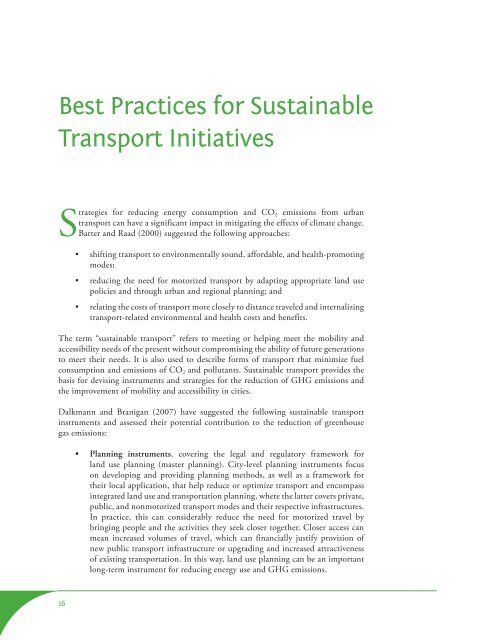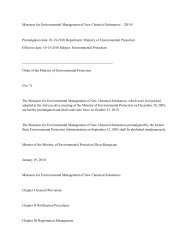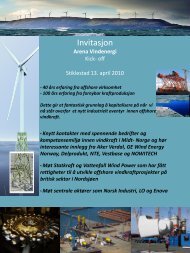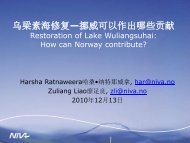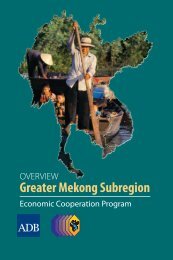Urban Transport - India Environment Portal
Urban Transport - India Environment Portal
Urban Transport - India Environment Portal
You also want an ePaper? Increase the reach of your titles
YUMPU automatically turns print PDFs into web optimized ePapers that Google loves.
Best Practices for Sustainable<strong>Transport</strong> InitiativesStrategies for reducing energy consumption and CO 2 emissions from urbantransport can have a significant impact in mitigating the effects of climate change.Barter and Raad (2000) suggested the following approaches:• shifting transport to environmentally sound, affordable, and health-promotingmodes;• reducing the need for motorized transport by adapting appropriate land usepolicies and through urban and regional planning; and• relating the costs of transport more closely to distance traveled and internalizingtransport-related environmental and health costs and benefits.The term “sustainable transport” refers to meeting or helping meet the mobility andaccessibility needs of the present without compromising the ability of future generationsto meet their needs. It is also used to describe forms of transport that minimize fuelconsumption and emissions of CO 2 and pollutants. Sustainable transport provides thebasis for devising instruments and strategies for the reduction of GHG emissions andthe improvement of mobility and accessibility in cities.Dalkmann and Branigan (2007) have suggested the following sustainable transportinstruments and assessed their potential contribution to the reduction of greenhousegas emissions:• Planning instruments, covering the legal and regulatory framework forland use planning (master planning). City-level planning instruments focuson developing and providing planning methods, as well as a framework fortheir local application, that help reduce or optimize transport and encompassintegrated land use and transportation planning, where the latter covers private,public, and nonmotorized transport modes and their respective infrastructures.In practice, this can considerably reduce the need for motorized travel bybringing people and the activities they seek closer together. Closer access canmean increased volumes of travel, which can financially justify provision ofnew public transport infrastructure or upgrading and increased attractivenessof existing transportation. In this way, land use planning can be an importantlong-term instrument for reducing energy use and GHG emissions.16


